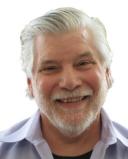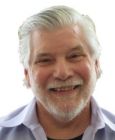Addiction
AA’s Step Two: Looking Beyond Your Self for Hope
Right-sizes the sense of self to depend on outside forces for help.
Posted August 25, 2023 Reviewed by Ray Parker
Key points
- While A.A.'s step one leaves people demoralized, step two offers a path toward hope for greater sanity.
- Step two begins a spiritual path to right-size one's sense of "Self," and possibly accepting help.
- Ending the isolation of relying only on oneself is an essential foundation of recovery from addiction.

Step one, admitting the inability to control one’s drinking and the resulting unmanageability of one’s life (A.A.’s Step One: Confrontation With Reality), often leads to a feeling described as “incomprehensible demoralization”—a total lack of confidence and hopelessness. Fortunately, step two offers a path toward hope discovered by the founders of Alcoholics Anonymous.
There are many ways to understand the meaning and implications of step two[i], so I want to be clear that what follows is only one perspective filtered through my own experience as an addiction psychiatrist. It should not be seen as speaking for A.A. My goal is to offer thoughts on the psychological depth contained in the 12-step approach to recovery from addiction (see A Meaningful Definition of Addiction Recovery).
Step two reads as follows:
Came to believe that a Power greater than ourselves could restore us to sanity.
“A power greater than ourselves” is the second major hurdle for people seeking recovery from substance use disorders. First, there was having to admit powerlessness over alcohol, and now there is almost immediately the issue of believing a higher power exists and can be helpful. Everyone knows this is a euphemism for God.
A. A. is explicitly a spiritual program, but many confuse religion with spiritual exploration, much to their detriment.
Newcomers who reflexively resist considering a power greater than themselves, and reject any mention of spirituality, are often advised to take Step two one word at a time. “Came” means that many new A.A. members are simply encouraged to forget about grappling with a higher power for the time being and just to “keep coming back.“
“Came to” evokes an image of an unconscious person regaining consciousness, or “coming to”. Attending meetings of recovering alcoholics awakens a person to new possibilities. “Came to believe” implies that expanding awareness leads to believing what has not been seen before.
In a reversal of “seeing is believing”, believing becomes seeing. For example, if you do not believe strangers can genuinely care about you, you will not see their caring. When you begin believing they could care, even for you, you begin seeing their caring.
This is one of the fundamentally important experiences newcomers have when they begin attending A.A. meetings.
There are, of course, many forces greater than any one of us—gravity, hurricanes, our need for clean air and nutritious food, etc. If we violate nature by contaminating the air we breathe by smoking, and our body by eating junk food, it is impossible to be healthy. It is easier for most of us to meditate with other people than alone in our room.
If we obey nature, clean air, and good food nurture us. Even our conscience is a power greater than ourselves, constantly interfering with our unbridled desires to remind us of our deeper needs. Step two is merely stating that there are forces outside ourselves that can move us toward a saner life.
Many people with substance use disorders have become almost terminally isolated and drawn back into a life of secrets and shame. They have become reliant only on themselves to prove they can pull themselves out of their misery, not seeing that much of their misery comes from the isolation of prideful self-reliance. The only times they look beyond themselves is when they are blaming other people, places, and things for their pain.
But what is the "Self?" Isn’t it the mixture of a mental construct and our immediate experience of I see, I taste, I feel? And all these sensations and thoughts add up to the idea that I exist as a separate individual.
Step two asks us to right-size ourselves. We are small. Our powers are limited. And, most importantly, we are “Not God” (see Ernest Kurtz reference below).
There are forces and mysteries out there still to be grasped, and not all of them are dangerous or harmful. Just as sitting with other meditators makes meditation easier, sitting in a room of other recovering alcoholics and addicts makes recovery easier.
Step two encourages people in need of recovery from addiction to get over themselves and to look beyond their immediate selves for hope and help. Simply opening one’s mind and heart to the possibility of a “power greater than yourself,” being able to help restore you to sanity, without the faintest idea of what this power might be, represents a step out of the isolation of being locked in the prison of a narrow self.
Before Step two, people with substance use disorders depended on a substance as the only help that came from the outside. But these substances are like barbed fishhooks that soon enslave and demand dependence on them. Step two opens the possibility of voluntarily depending on benign influences outside one’s self that nurture recovery.
In the end, people in recovery discover that they can depend on more than just themselves. Opening to a belief in forces outside one’s "Self" is necessary to move from step two to step three, when a personal understanding of a higher power is developed by making a decision to trust its presence and caring.
References
[i] Readers interested in a deeper dive into AA and the Twelve Steps can find it in AA’s How It Works and the more academic work by Ernest Kurtz, Not God: A History of Alcoholics Anonymous, Hazelden, 1991.




